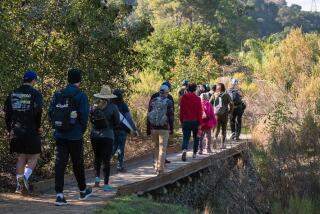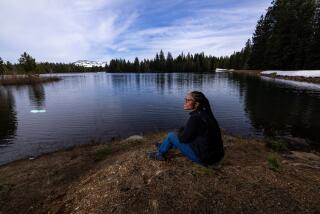Fair Offers $1 Million for ‘Mitigation Credits’
The Del Mar Fair Board said Tuesday it wanted to contribute $1 million toward the purchase of regional park land so it could win environmental brownie points.
The land, known as the Del Mar 88 property, was already purchased last month by the San Dieguito River Valley Regional Park authority, which wants to develop a park and wildlife corridor stretching from Del Mar to the foothills of Julian. The park agency bought the 98-acre parcel for $2 million. The deal is expected to be finalized later this month.
Fair board officials, however, say they now want to contribute $1 million toward that purchase price so they can win so-called “mitigation credits”--environmental good deeds that many public agencies require to offset the negative consequences of development along the ever-fragile coast.
Administrators of the 22nd Agricultural District, which operates the fair grounds, say the $1-million contribution for parkland would effectively offset what it called various projects included in the district’s approved master plan--which include replacing many of its aging facilities.
San Dieguito River Park staff members said they could not react to the fair board’s offer until its board of directors, known as the Joint Power Authority, meets on Jan. 18.
At the same time, in a somewhat convoluted real estate proposal, the fair board said it also wanted to buy about 40 acres of the so-called Horse World property on the east side of Interstate 5, behind the Big Bear shopping center along Via de la Valle.
That property--a portion of the total 90-acre Horse World tract--would also be dedicated to park use except for two weeks a year when it would be used to accommodate overflow parking for the annual summer fair.
However, the river park agency also covets that same property, and already had lined up a $2-million grant from the state’s Coastal Conservancy to buy it.
The fair board said the $1 million could be saved for the regional park authority to “purchase other land being sought” for its regional park.
“It makes sense for the district to step forward now, participate in the JPL’s acquisition effort, and set up a bank of mitigation credits which can be drawn upon to satisfy the district’s future needs,” fair board president Jan Anton said in a press release.
The statement said Anton and other fair board members are seeking to meet with the Joint Powers Authority board to “explore the possibilities of the large cash contribution in exchange for habitat mitigation credits which the district needs.”
Abbe Wolfsheimer, the San Diego City Council member who chairs the Joint Powers Authority for the San Dieguito River Valley Regional Park authority, was in Sacramento and had not heard of the fair board’s proposal, according to a spokeswoman.
Regional park officials have said that acquisition of several hundred acres in the river valley alongside the fairgrounds and on the east side of I-5 would provide a western gateway to the park.
Officials have talked of keeping the property in undeveloped open space, and perhaps of extending the San Dieguito Lagoon alongside the fairgrounds to the eastern side of the freeway as a wildlife habitat.
Park officials have noted that any number of agencies--including the fair board and even the Port of Long Beach, as well as private developers along the Southern California coastline--have indicated willingness to spend money on behalf of the park project as a way of winning “mitigation credits.”
Such credits are necessary when private or public development along sensitive coastal lands result in the destruction of habitats and other sensitive areas, requiring those developers or agencies to offset that environmental damage by making like contributions elsewhere, as mitigation credit.
Fair board officials say the purchase of the Horse World property would allow them to build freeway on and off ramps north of an environmentally sensitive wetlands area where they are now proposed--a plan that has been criticized by regional park advocates.
Officials said the acquired land could be used to relocate a California least tern sanctuary. Last summer, the board paved an existing least tern site without proper permits.
Investigators from the Army Corps of Engineers in Los Angeles have not yet decided whether to reinstate the work done at the paved site or apply for an after-the-fact permit. They said fines could still result from the board’s actions to pave the protected site.
More to Read
Sign up for Essential California
The most important California stories and recommendations in your inbox every morning.
You may occasionally receive promotional content from the Los Angeles Times.











